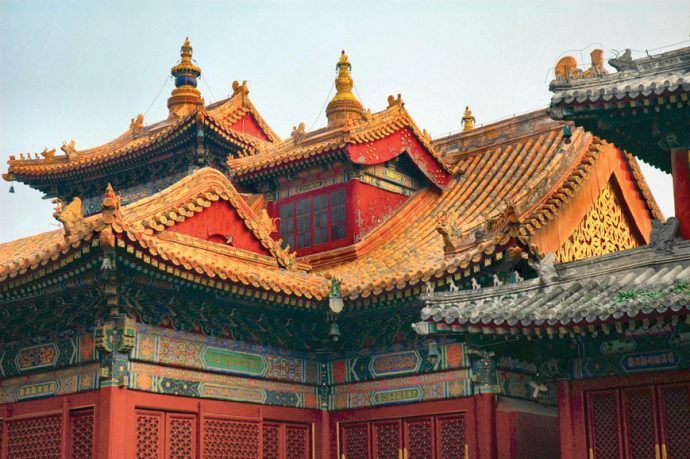Perhaps the most fashionable figures in China today are enhanced robots. These romanticized jiqiren, meaning “mechanical people,” dispense basic advice in banks in high, feminine voices and request customers to wait patiently in line. They are even making appearances as wedding witnesses and — get this — Buddhist monks.
In the Together Restaurant in central Beijing, talking robots wearing flowered neckerchiefs — their electronic eyes flashing hearts — serve as maître d’s and waiters. Programmed to sing and dance, mechanical people offer innovative, if not sophisticated, entertainment.
Wang Peixin, owner of Together Restaurant, told Te-Ping Chen of The Wall Street Journal that, “Young people like to pursue what’s new, and robots are a fashionable, modern style of service.”
At the Fragrant Island snack bar, also in Beijing, manager Jiao Songghui claims that his silver robot — sporting a pink face, brown sideburns and a white chef’s hat and slicing noodles faster than any human — is a “French guy.”
Top Chinese leaders have championed a pro-robot agenda, with President Xi Jingping calling for an industrial robot revolution.” China’s Robot Fever was on full display during the Chinese Lunar New Year celebration. A highly rated television show featured 500 costumed robots dancing in sync, like mini-Rockettes at Radio City Music Hall, as colored drones zoomed overhead.
Perhaps the most improbable New Age robot in China is an automated Buddhist monk presiding over the Longquan Dragon Spring Lama Temple, which dates from the Liao Dynasty (970-1125) and is on the outskirts of Beijing on Fenghuang Mountain with a view of the North China Plain. In 1972, when I first visited the temple, I found it sadly neglected. This was during the Cultural Revolution and only a few nervous saffron-robed Tibetan monks wandering around the remains of the run-down temple complex welcomed me.
But there is a happy ending. Just last year, Dragon Spring underwent a major makeover to become the hottest high-tech temple in China. A new generation of monks with an original approach to promoting Buddhism reincarnated the ancient temple and populated the old complex with academically qualified monks and a strong scientific research team. The temple’s most popular monk is Xian’er, a pudgy, 2-foot-tall robot sporting yellow robes and a shaven head who has become an internet sensation. He/it moves via voice command and answers questions about Buddhism by means of a touch screen on his chest. He can also chant the “Heart Sutra,” or “The Great Compassion Mantra,” and play Buddhist music.
In his off time, the automaton monk meditates in the office of his creator, a real live monk, Master Xianshu who, before converting to Buddhism and entering the monkhood five years ago, wrote for the web. He based Xian’er on a caricature novice monk he had earlier fashioned as the protagonist of a popular animated cartoon series, “Trouble, and seek for yourself,” published by the temple and starring traditional Chinese dough figurines made with flour. Akin to Disney’s Pinocchio, Xian’er was digitally imbued with life but didn’t tell lies. Instead he propagates Buddhist Dharma and offers ancient wisdom to millions of modern visitors.
The endearing religious robot comes at a time when Buddhism in China is on the rise. The Buddhist Master regards his puppet monk as a means to spread the Mahayana Buddhist doctrine of inner peace. He says the purpose is to reach out to the young people who have lost their way and become more connected to external material temptations, fame and wealth than their inner being. Xian’er is only the beginning as a second generation of robot monks is being created.
Because of China’s former one-child policy, the working age population has been shrinking and manufacturers are automating to compensate for labor shortages. But immigration-averse China may also be forced to import people to care for the elderly. Might robots play a role in the family as well, and what will the technology mean for human workers, a just wage and China’s family-centric traditions?
The Chinese hope robotics, a global phenomenon, won’t replace humans but will instead help them to develop new jobs and offer opportunities for more exciting, creative lives.




